Creating a File Channel Deployment
In this tutorial, you’ll learn how to create and run a File Channel deployment.
A File Channel deployment allows you to prepare and send a file to a specific SFTP or S3 location with an agreed format. Agreed format refers to the headers and header values to be populated from a given target group. Header values can be replaced with a target group value or a static value.
It can be a One Time deployment or a Recurring deployment over a period of time. The file will be uploaded to a specific destination as per the deployment schedule. Let us understand this channel using a use case "Uploading a set of contacts into an SFTP for bulk provisioning or fulfillment".
For Follow-up deployments, when eligible contacts are created using Apply campaign filters, then the 4th quadrant condition is not applicable.
Prerequisites for File Channel deployment:
If your username is assigned with an admin role, then you can complete all the steps to create a deployment. If your username is assigned with a role that has limited permissions, then you can create a deployment and send it for approval. Upon approval, the deployment can be activated.
- Access to Campaign management section
- A Campaign
- A Target Data for File Channel
- A Configured SFTP Destination
- A Purpose
- A P&L
Step 1: Create a Deployment
A deployment is a set of instructions to process a campaign under the parent campaign.
To create a deployment:
- Navigate to Campaign management > Campaign list screen and click on the campaign in which you want to create a deployment.

- Click Create deployment on the campaign summary screen that appears. The campaign summary screen will display status of all the deployments of the campaign. For more information on creating a deployment, go to Creating a Deployment section.
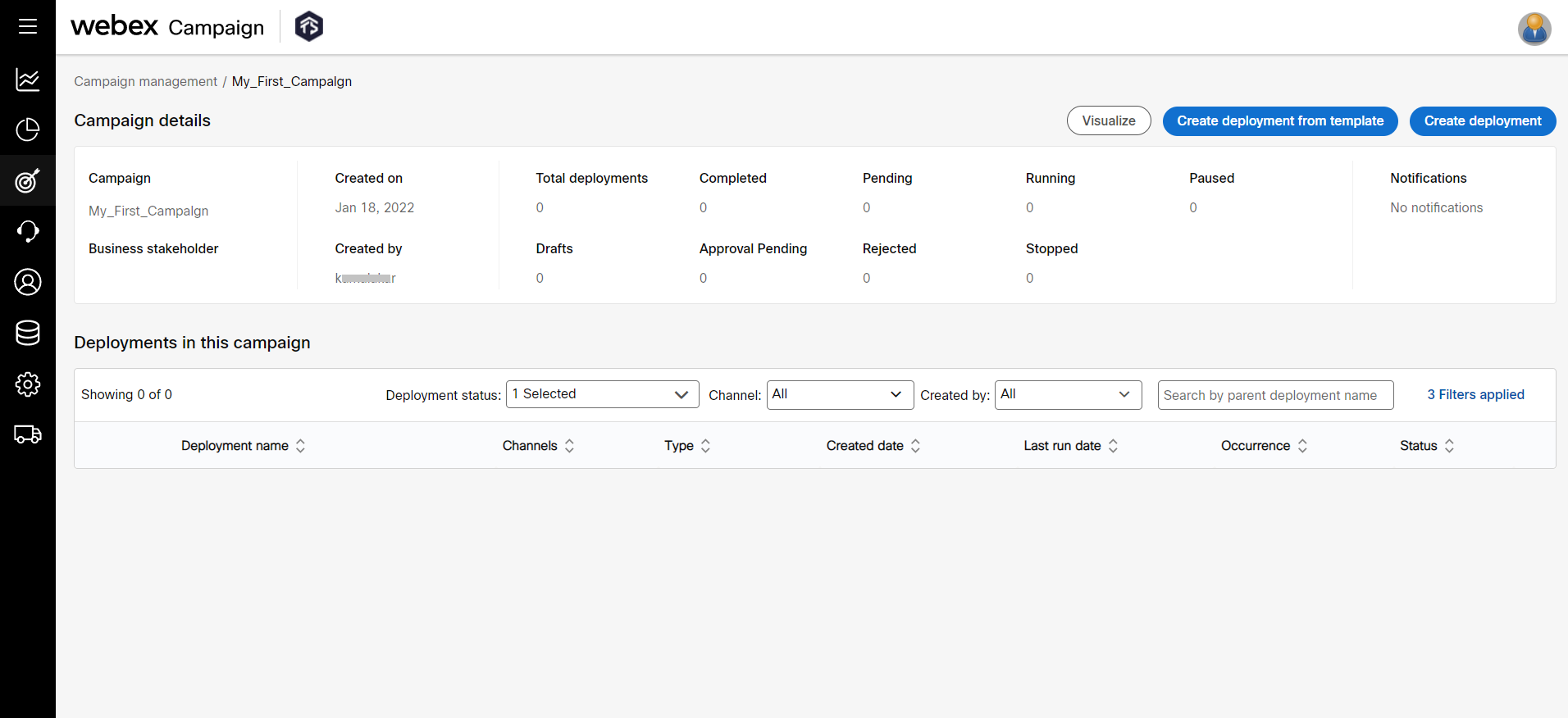
- Select the Deployment type as Promotion.
- Select the Type of Promotion as Simple promotion, Mode of deployment as One time , and Content type as File. Click Next.
- Select the Channel as File and click Create.
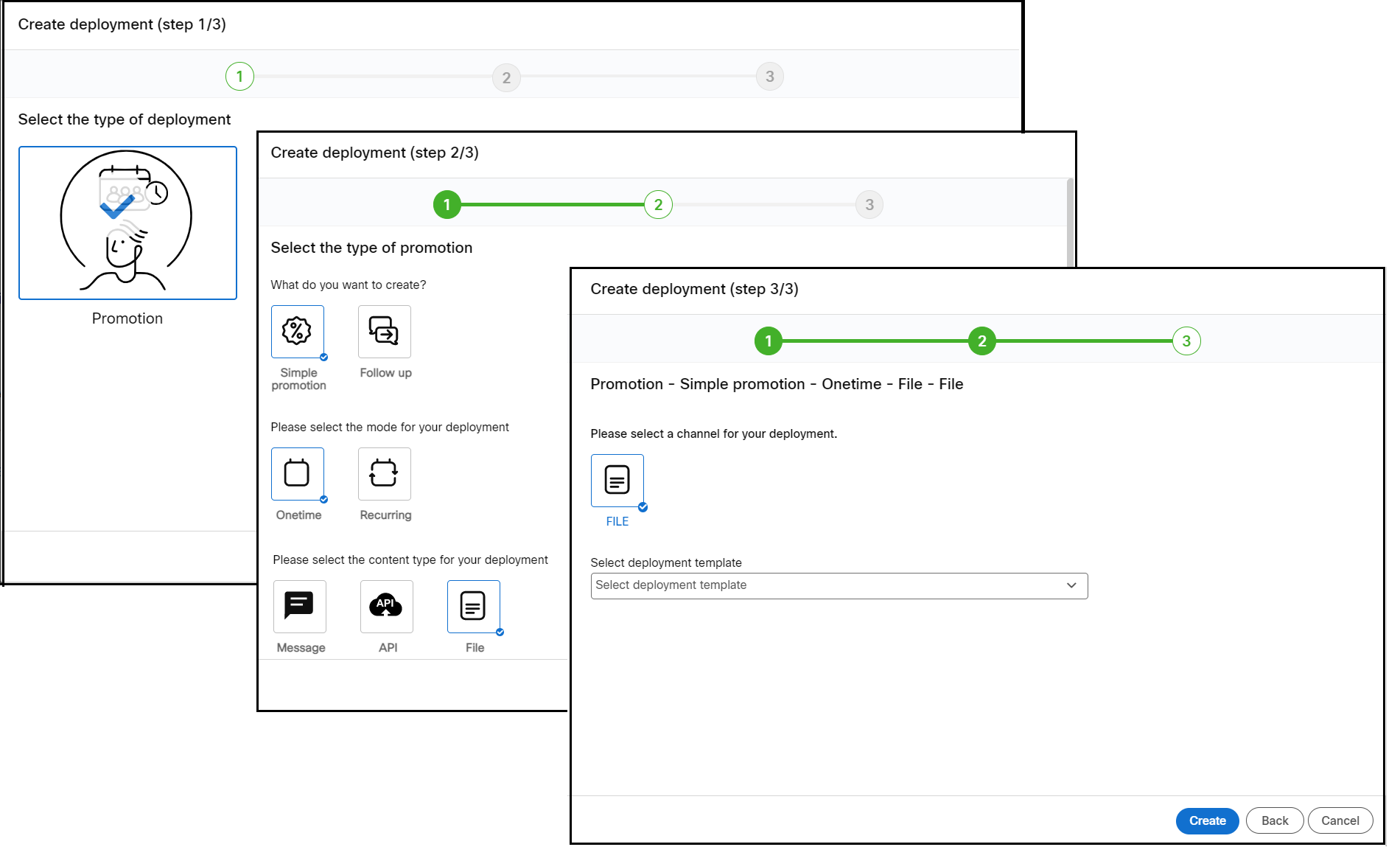
- The Deployment creation screen appears. You have to configure each node in the deployment creation screen.
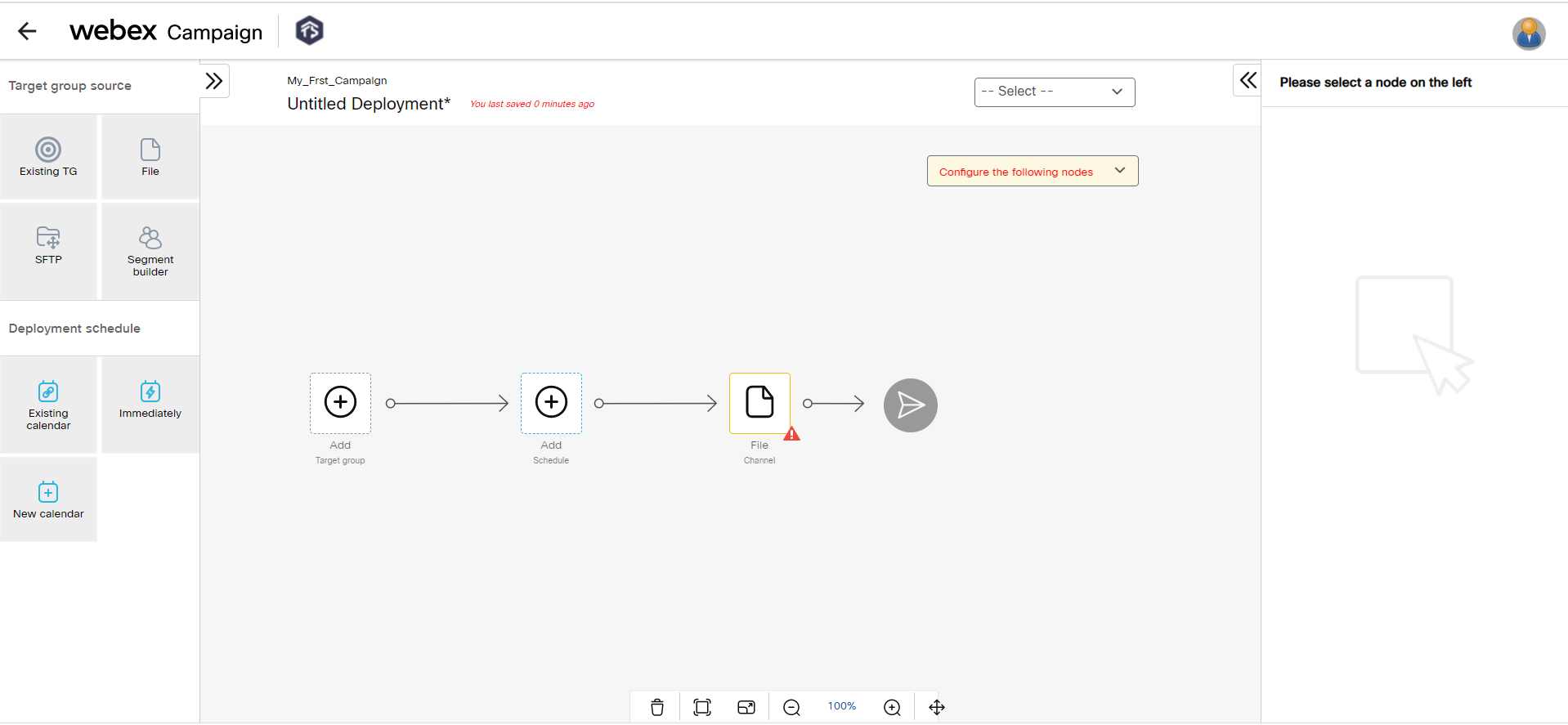
The left panel displays different nodes that can be used to configure a node, The nodes are grouped based on their usage. When you select a node the right panel displays the configuration options.
Step 2: Choose Your Recipients
In this step, the recipients of the campaign are selected. As mentioned in the prerequisites, a target group should already be uploaded to the Webex Campaign.
Follow these steps to add the recipients for the deployment:
- From the Target Group Source , drag-and-drop the Existing TG node onto the Target Group placeholder. We have chosen the Existing TG node because the target group is already uploaded as a prerequisite. For more information on adding a target group from different nodes, go to Target Group Source Nodes section.

- Select the Existing TG node and click + Add from the right panel.
- Select the target group that was uploaded.
- Click Save & proceed to close the target group screen.
- Click Save changes.
Now the recipients are successfully configured for the deployment.
Step 3: Create a Schedule
In this step, select a schedule to send your campaign immediately, or create a schedule (a date and a time) to run the deployment in the future. For this tutorial, we will run the deployment Immediately as soon as the deployment is activated.
To configure the schedule:
- Drag-and-drop the Immediately node onto the Schedule node.
- Select the Schedule node. From the right panel, click Save changes.
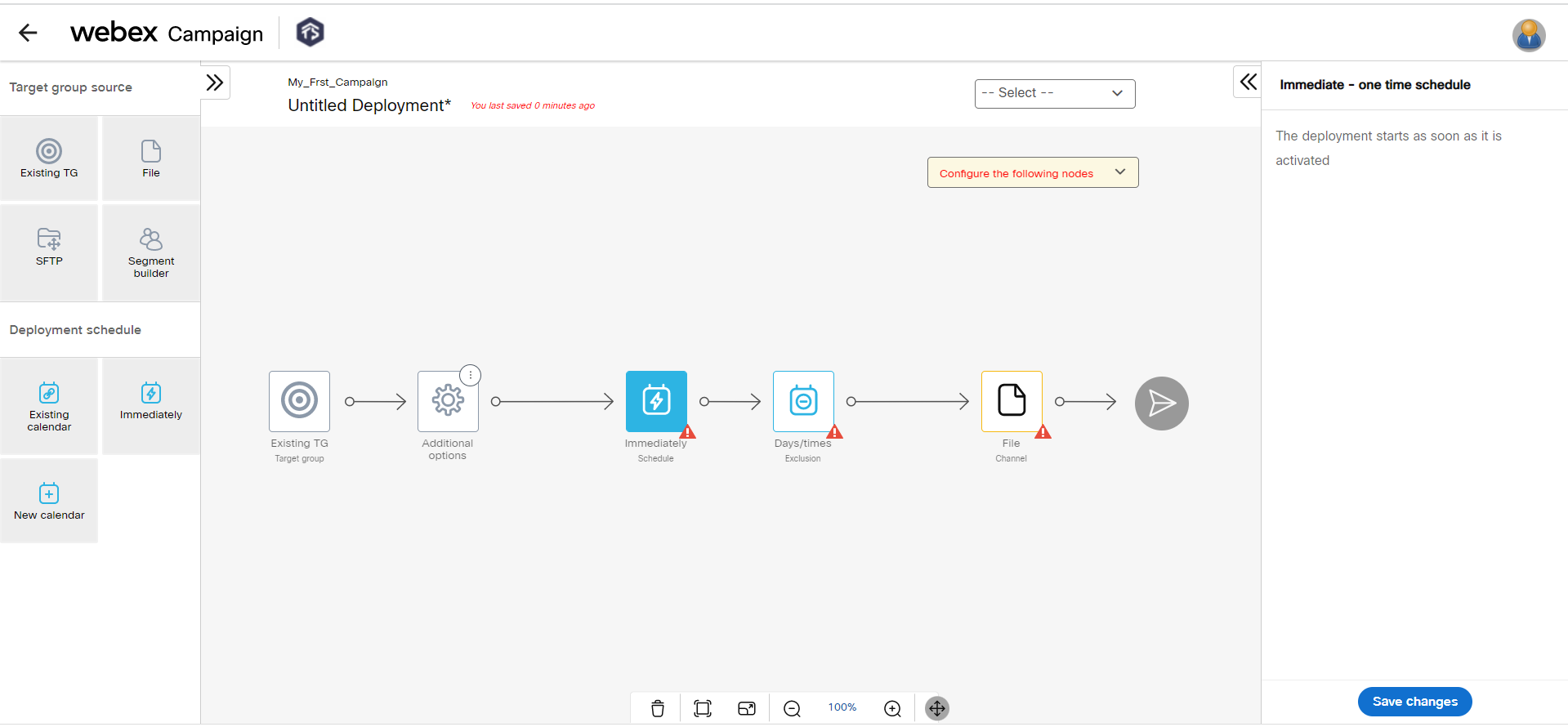
Step 4: Configure Exclusion Day/Times
During the exclusion day or time, the deployment is paused temporarily and resumes once the exclusion day or time has lapsed. The exclusion day or time is set by the administrator that is applicable to all campaigns across the tenant. To add a custom exclusion day or time, configure this node.
For more information on exclusion day or times, go to Exclusion days / times section.
For our tutorial, we will proceed with the default exclusion day or times. Select the Exclusion days/ times node and click Save changes.
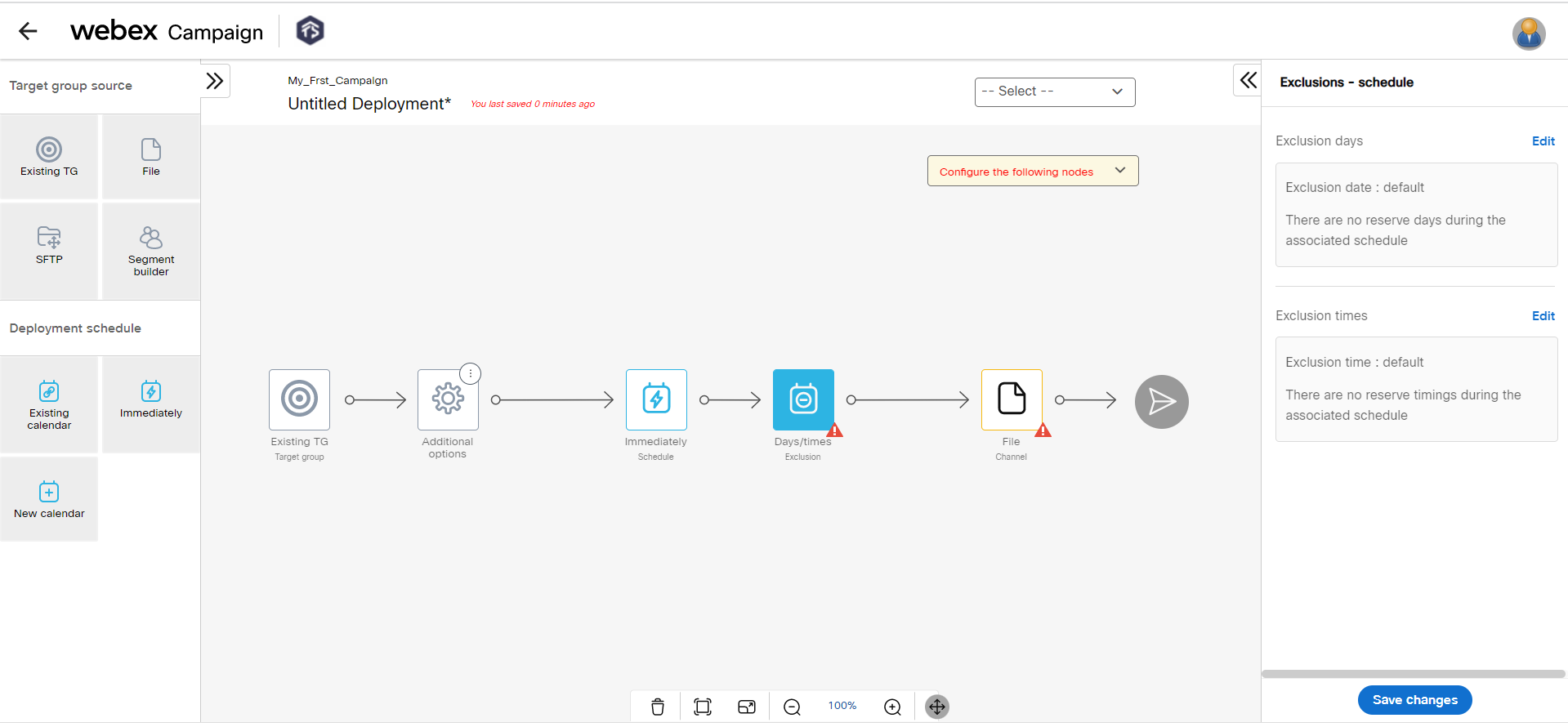
Now the schedule is successfully configured for the deployment.
Step 5: Configure File Chanel Node
Follow these steps to configure the File Channel node:
- Click + Add . The File content configuration screen appears.
- The output file headers will be shown in editable mode. You can edit or delete the headers or add new headers.
- Configure the following fields:
- Destination: Select the SFTP destination.
- Destination path: Enter the absolute destination path.
- File name: Enter a new file name.
- (Optional) To encrypt the file select the Encrypt file checkbox. It will encrypt the file according to your organization's previously agreed encryption mechanism.
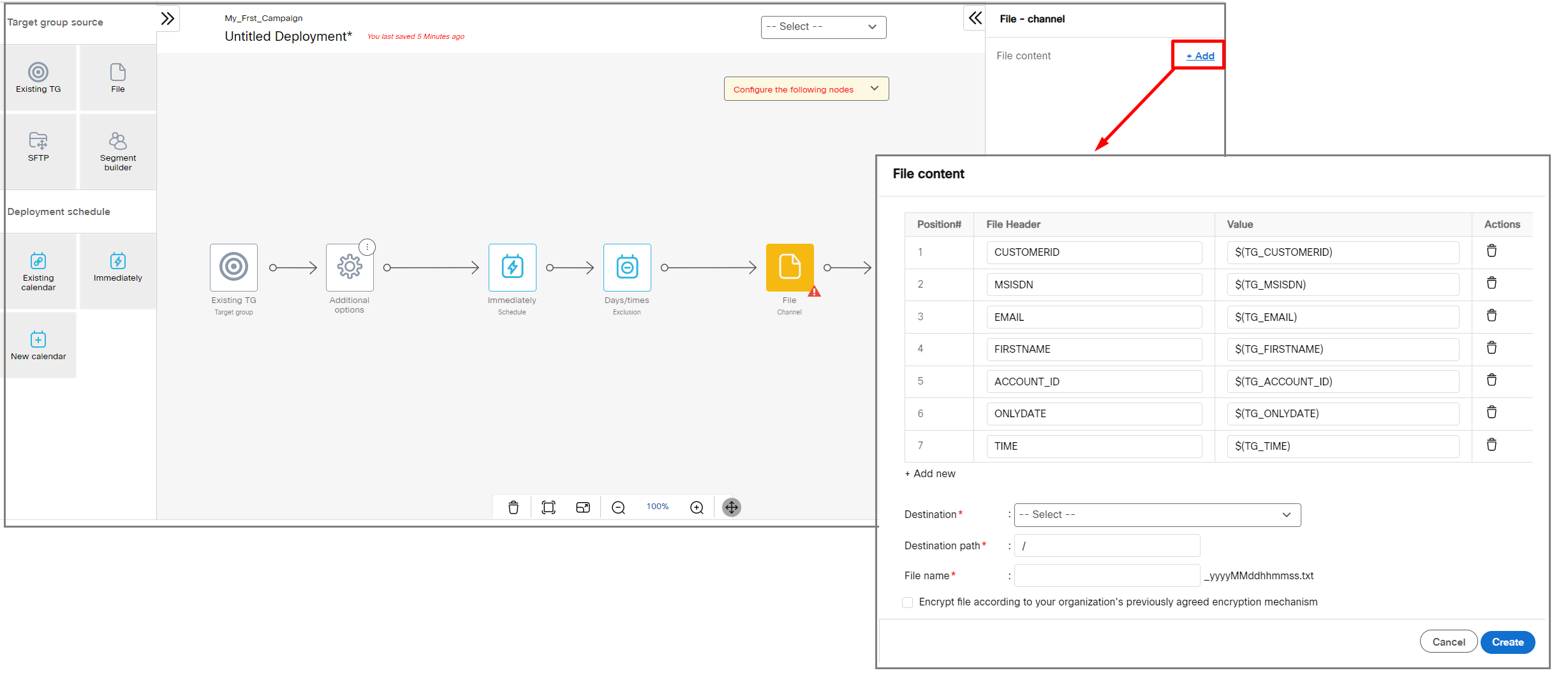
- Click Create.
- Click Save changes to save the node.
Now all the nodes are configured.
Step 6: Save the Deployment
In this step the deployment can be saved as a Draft or ready for Activation. The Deployment meta tags are mandatory to activate a deployment. If you are not sure of the Deployment meta tags that should be used, you can save the deployment and come back later to select the Deployment meta tags.
To save the deployment as ready for activation:
- Select Save & exit. The Save deployment screen appears.
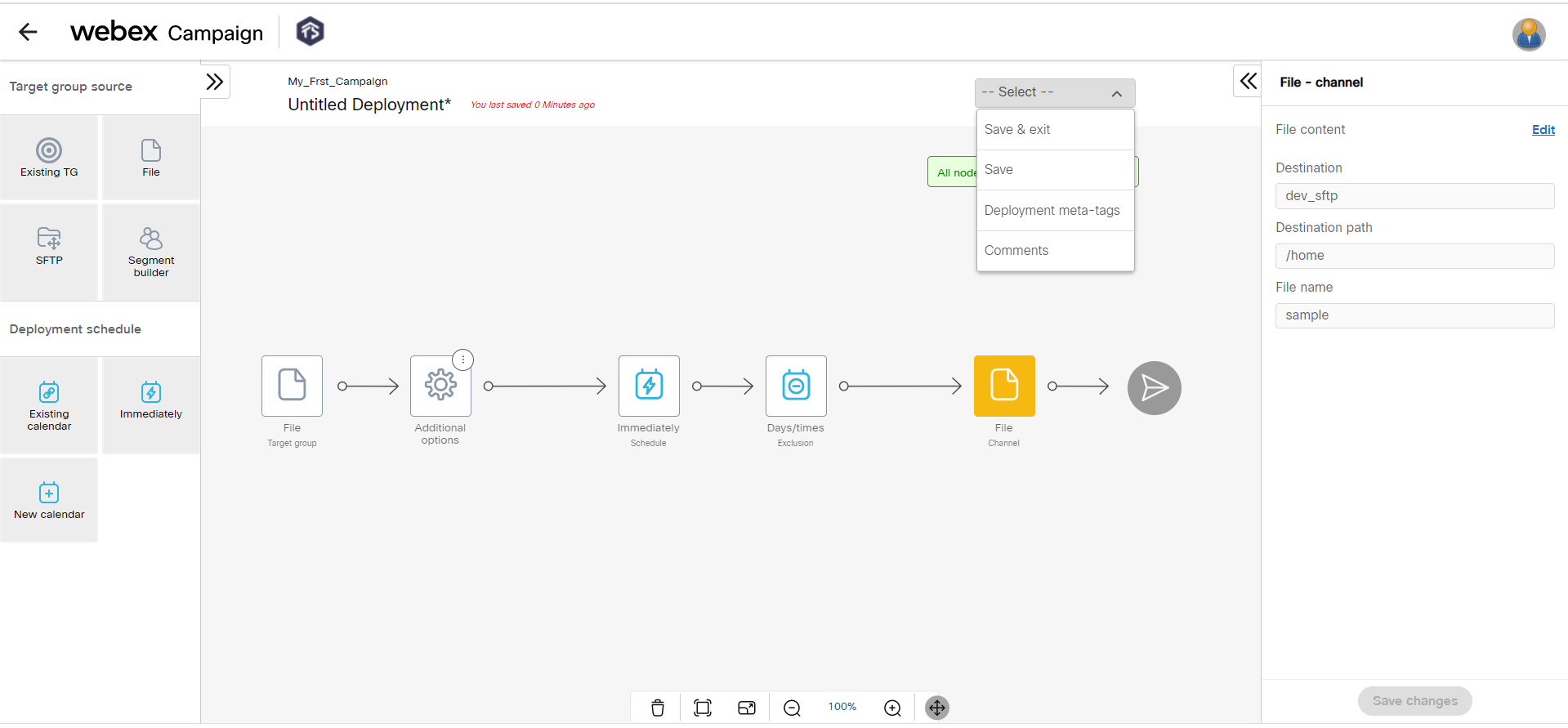
- Enter a name for the Deployment such as My_First_File_Deployment.
- Select a P&L to which you want to associate this deployment.
- Select one or more purposes from the Purpose drop-down.
- Enter a Deployment code.
- Click Save.

Now the deployment is ready for activation.
Step 7: Activate the Deployment
On the Campaign List screen, click the ellipses icon of the deployment and click Activate. You will receive notifications for various stages of the deployment.
If the user does not have permission to approve their own created deployments, then instead of Activate button, you will notice Send for approval.
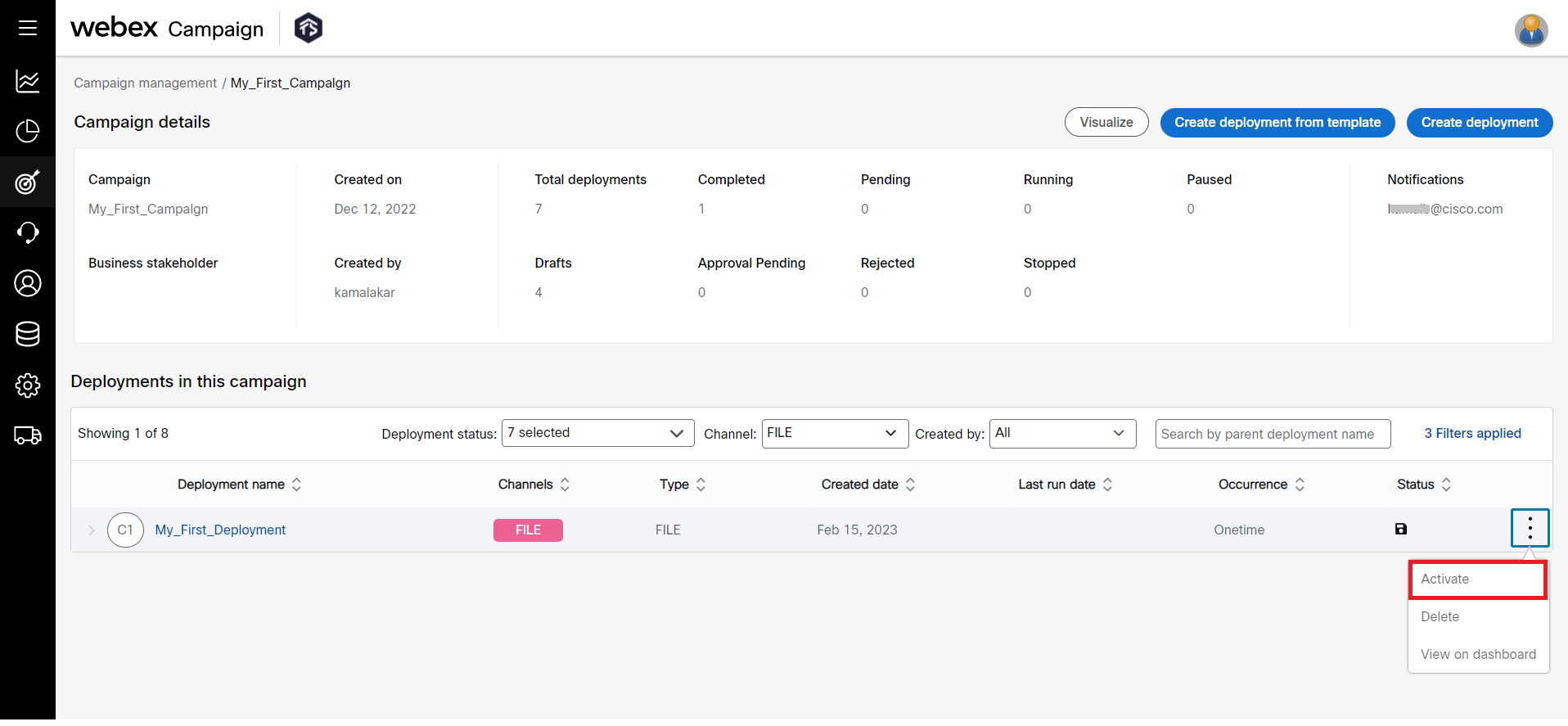
You can go to the Dashboard section to view the performance of your deployment.
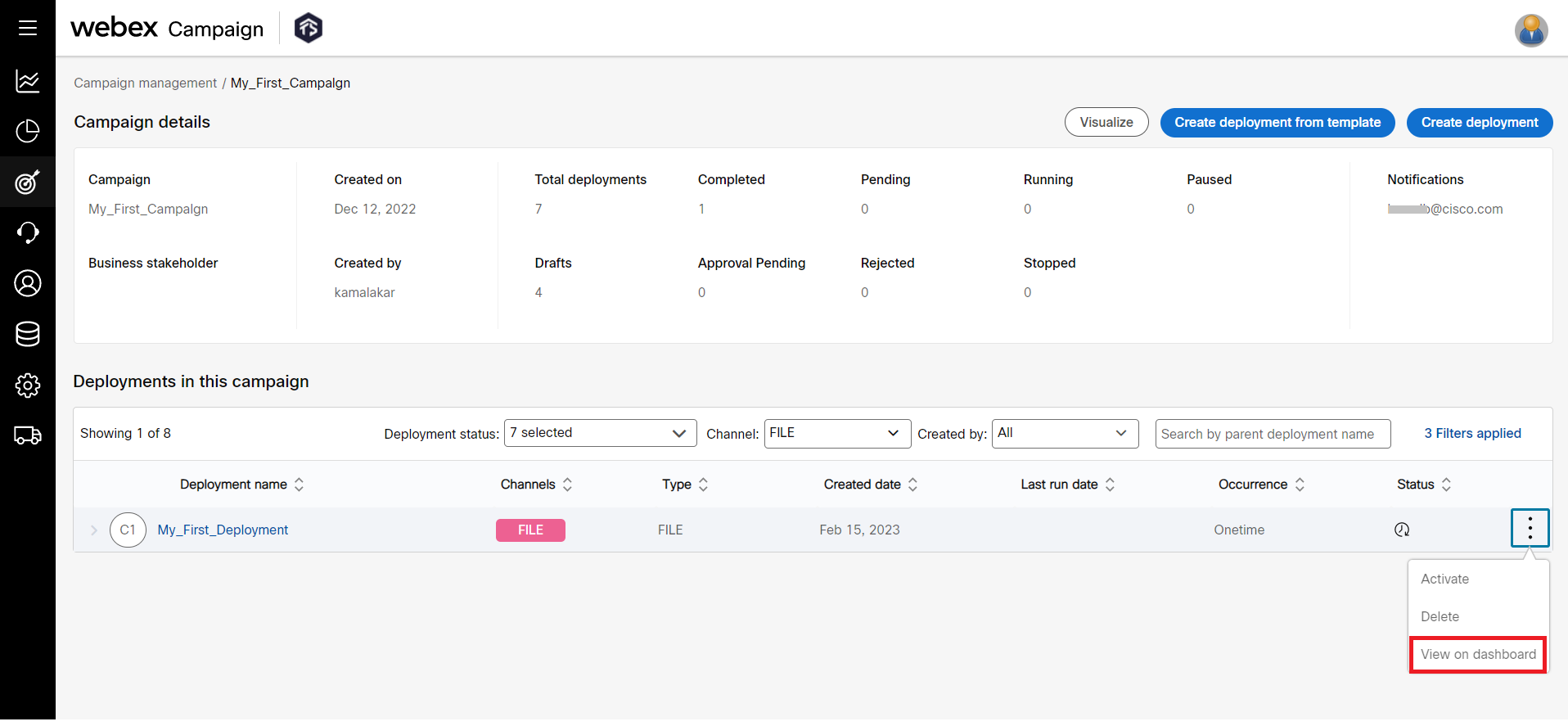
If you have questions, please contact your Webex Campaign account manager or Cisco Webex technical support team by phone or email:
- Europe / Middle East / Africa:
- Phone: +44 (0) 1494 750 600
- Email: [email protected]
- North America:
- Phone: +1-855-324-0970
- Email: [email protected]
Updated 11 months ago